Firmly woven into ABC lore is the famous story of the eleven-days genesis of the post-war model, following a wager between designer Bradshaw and manufacturer Sopwith. Development certainly proceeded with remarkable rapidity in the period following the 1918 Armistice at ABC's Hersham facility, notwithstanding Bradshaw's admission that the General Arrangement drawing of the machine already existed at this time (Ref. 3), and that a general-purpose flat twin engine was available for modification.
Principle sources for the following notes are articles that appeared in The Motor Cycle in November 1918 to March 1919, and in Motor Cycling in March 1919.
To take The Wager as a starting point: speeches made by both Sopwith and Bradshaw on 19.12.18 (Ref. 2) indicated that the wager had already been won by Bradshaw (with ten days to spare!) but had not been made until after the Armistice, on 11.11.18. Further, certain details of the design had been independently reported on 28.11.18 (Ref. 1), seemingly squeezing the period of the wager into a seventeen-day slot in November 1918.
According to Bradshaw (at a later date, Ref. 3), the wager was "to get out the detail drawings of the whole machine, and have one on the road in three weeks". But what this machine really consisted of, is difficult to conjecture. In Ref. 1, it was reported that "The gear is enclosed in the flywheel, and embodies three forward gears on the epicyclic principle." It added that "…both brakes are of the cone type…". In Ref. 3, this was repeated, and also that "the (cone) brakes operated on quick-pitch threads". However, there seems to be no evidence of hardware being made to these descriptions.
What is evident is that by March 1919 (Ref. 4), at least one prototype/experimental model was up and running. In fact, both The Motor Cycle (Ref. 5) and Motor Cycling (Ref. 6) carried reports of Road Tests of this model. However, small though significant differences in the descriptions suggest quite strongly that these tests were of two different machines, even if they shared the same Registration Number! And although neither machine featured an epicyclic gearbox or cone brakes, they were yet very different to the machines that went into series production about a year later, as detailed below.
Ways in which The Prototype(s) were different to the Machines we know:-
Starting with the frame: the swinging rear fork pivoted on individual pins in forward-projecting frame lugs, not on a single bar that passed through the frame tubes, and also anchored the rear of the power unit via connecting plates. Indeed, the rear location of the power unit was (laterally and vertically) via a plate attached to a transverse frame tube, and (longitudinally) by a tubular strut running back from the port side of the flywheel bell-housing to the swinging fork lug on that side.
The brakes were of conventional drum-type. The wheel spindles were "withdrawable", perhaps conferring a degree of Quick Detachability to the wheels! Some brake drums were finned. The front brake was on the starboard side.
A chain guard was fitted, presumably with pivoted attachments at both its ends.
Two styles of tool box carried mention: a central box under the crankcase, and twin, very shallow boxes, under the aluminium footplates.
There were no bracing-struts from the front of the luggage platform to the rear mudguard. This guard carried a gutter-strip along the lower edge of each valance.
One machine was said to have a double centre-stand, with short legs for parking, and longer legs to facilitate rear wheel removal.
There were no sidecar-attachment lugs.
The petrol tank (with no oil compartment) was beautifully lined and panelled, a feature that sadly was discontinued.
The engine: this was equipped with a pressed-steel oil sump, below which was situated a gear-type oil pump that revolved at one-sixth engine speed. One engine was said to feature a tell-tale oil-pressure plunger, located in the side of the crankcase, near the magneto: also a "crankcase release" that blew oily vapour onto the chain.
A "standard pattern ABC carburettor" was fitted (definitely not the Claudel-Hobson type HC4 that we all know, although it could well have been an earlier C-H type). (A claim that the induction manifold was equipped with a "special (warming) jacket" is not substantiated in the photos).
Silencers were of two styles: individual left-and-right pots, or a single transverse can.
Valve springs were of "volute" pattern (like secateur springs?)
The transmission: the clutch was of the cone type, claimed to be operated by a portside handlebar twist-grip! (The grip doesn't feature in any photos, however).
The bevel-box carried a dynamo set transversely beneath it, driven by gears.
In one case, there was "a (gearbox) sprocket with two self-contained separate shock absorbers of the rubber block type". In the other case was "the well-known ABC "cush" drive…in the rear wheel sprocket".
The gearbox sprocket was not fitted with a self-release system.
Chain size was 1/2" x 1/4" (surely more suitable than the 5/8" x 3/8" that followed it!)
Kick starters weren't fitted, only mentioned.
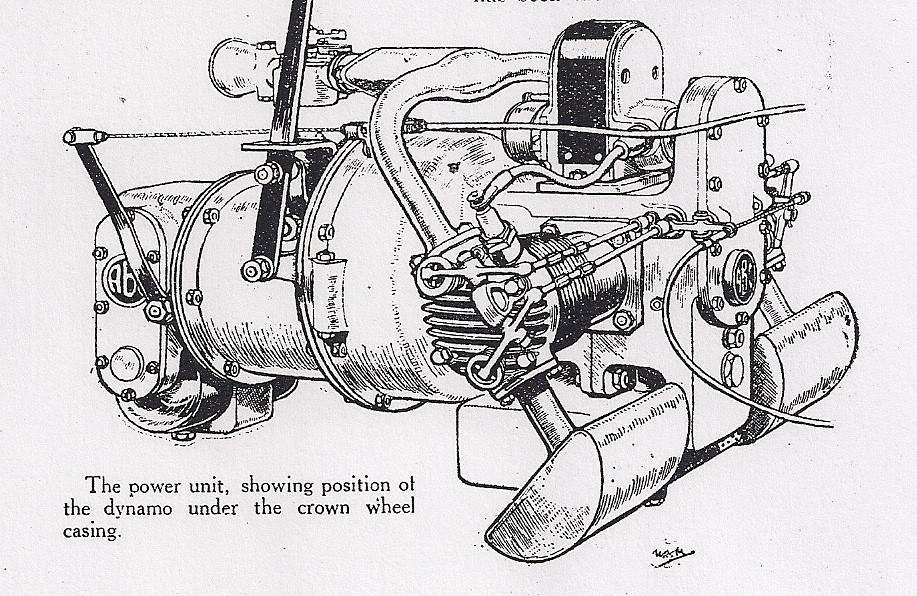
FIG. 1

FIG. 2

FIG. 3
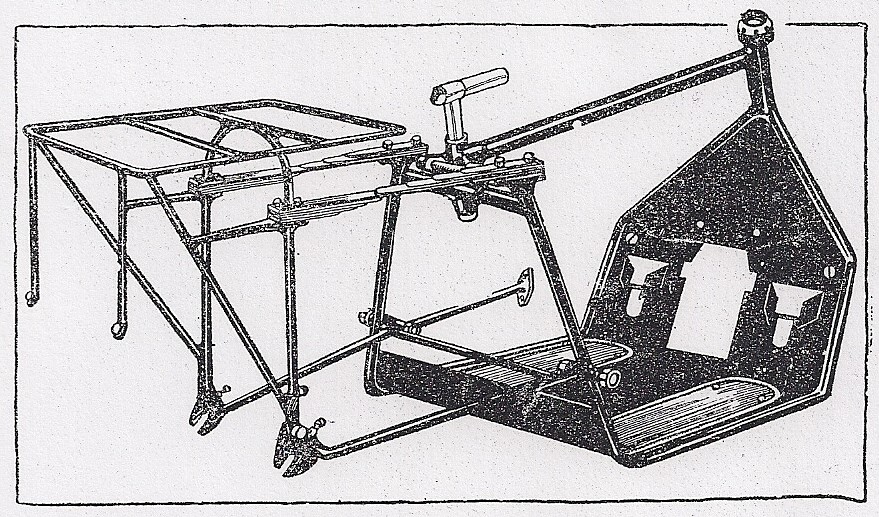
FIG. 4
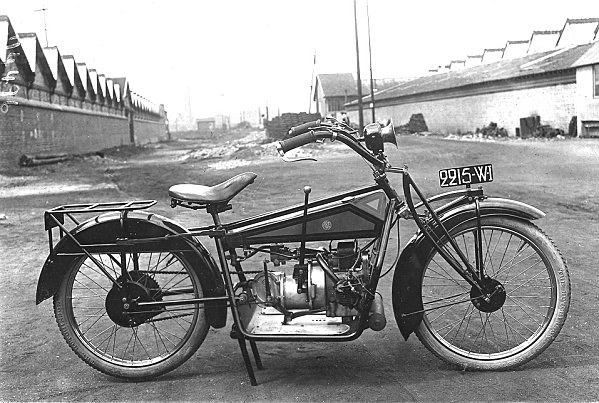
FIG. 5
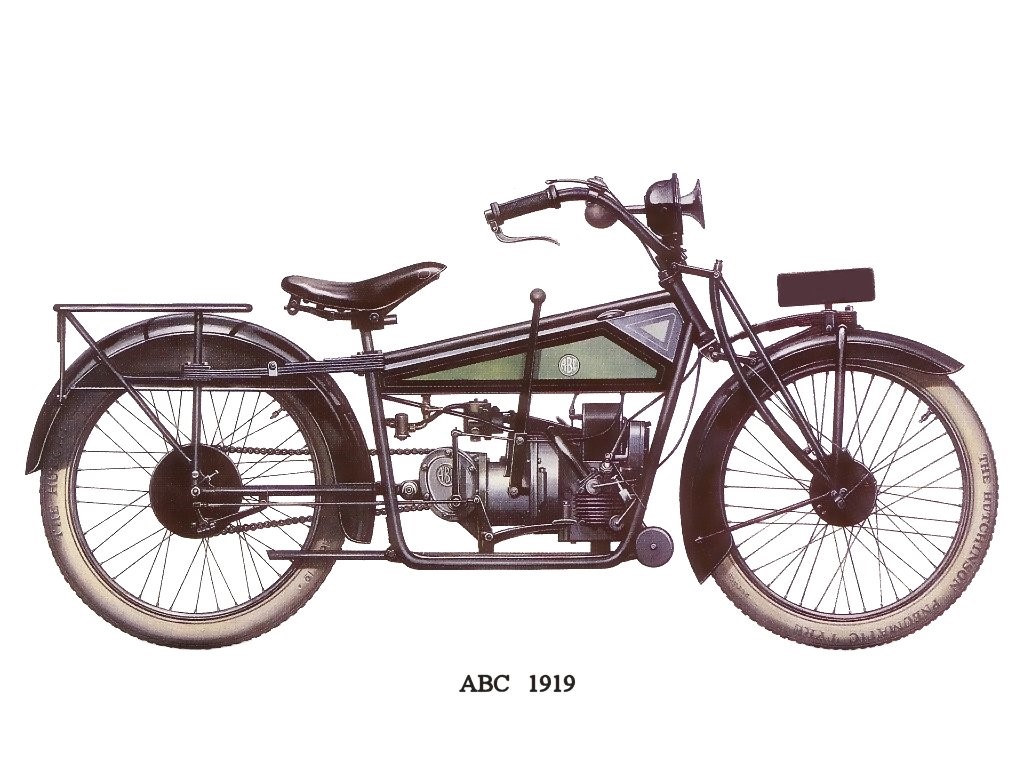
FIG. 6
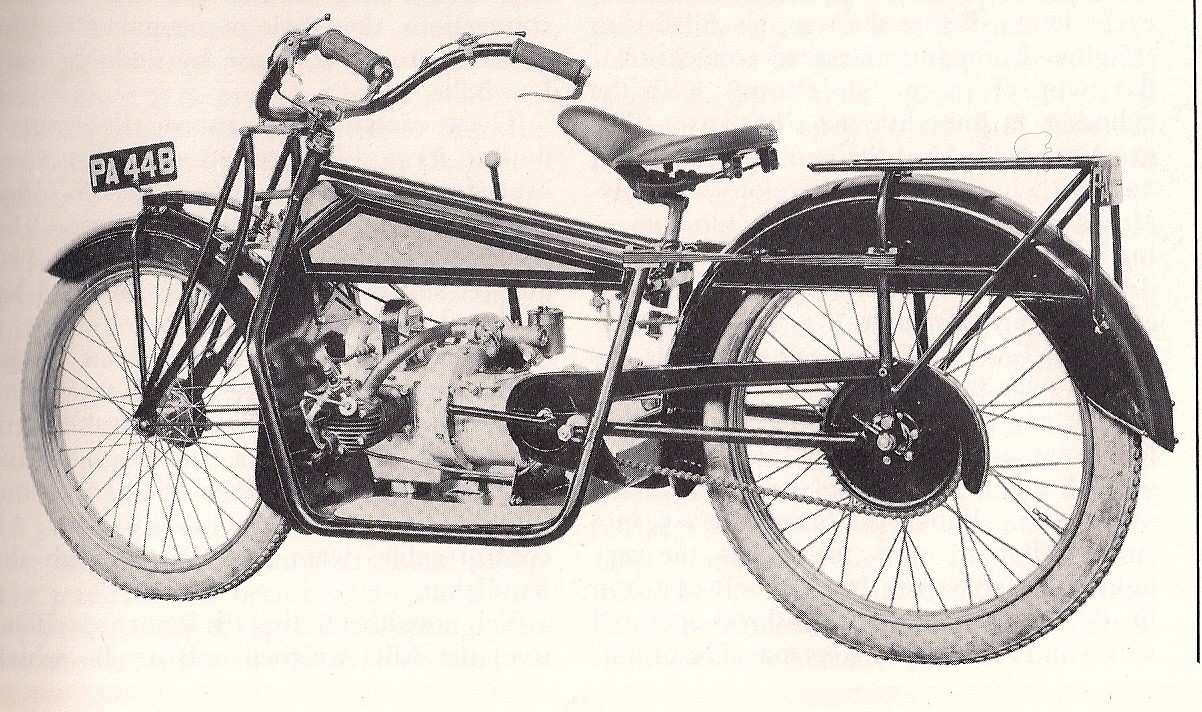
FIG. 7
Figures:-
Fig. 1 See Ref. 4
Fig. 2 See Ref. 4
Fig. 3 See Ref. 6
Fig. 4 See Ref. 6
Fig. 5 Thought to be a Prototype lent to Gnome et Rhone, and photographed at the French factory.
Fig. 6 This is a drawing, prepared from the Fig. 5 photograph.
Fig. 7 Taken from "Classic Motor Cycles" (Vic Willoughby, Temple Press), p.27.
References:-
Ref. 1 The Motor Cycle 28.11.18 pp.475/476
Ref. 2 The Motor Cycle 19.12.18 p.541
Ref. 3 The Motor Cycle 02.01.19 p.31
Ref. 4 The Motor Cycle 13.03.19 pp.242/244
Ref. 5 The Motor Cycle 20.03.19 pp.275/276
Ref. 6 Motor Cycling 18.03.19 pp.395/399
A Footnote or Two:-
I think that the foregoing covers what may be referred to as the mainstream development of the ABC Sopwith. Alongside this, however, a number of modestly-modified machines were prepared, perhaps not entirely by 'the works', for sporting and record-breaking purposes. Commonest 'mod' was the fitment of rear-set footrests, with a special fuel tank or two, and, in one extreme example, the substitution of rigid struts for the rear suspension!
You are referred to the Gallery for pictures of such specialised machines, with some of their dauntless riders!
By Paul Button
